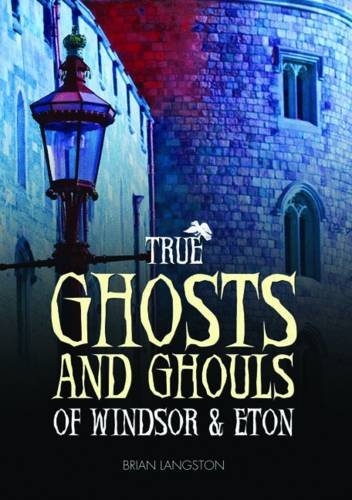
Reviewed by Tom Ruffles
Brian Langston is a former Assistant Chief Constable for Thames Valley Police (covering the Windsor area) and a member of the Ghost Club, currently resident in France. The Ghosts and Ghouls of Windsor and Eton mostly describes paranormal aspects of the area, and is an entertaining mixture of historical cases, folklore, and fresh anecdotes gathered by the author, divided into chapters headed by suitably alliterative titles. Sections cover the castle, the town, Windsor Great Park and Eton school.
Naturally there is a significant royal presence, with ghosts of monarchs identified at the castle from King Henry VIII to Queen Victoria, and Victoria’s own supposed interest in the afterlife is examined. Royal guards, who spend a lot of time standing around, make up a significant proportion of witnesses but they are not always possessed of the steady nerves expected of trained service personnel, and not always to be trusted with loaded firearms. At least one sighting was caused by a female servant masquerading as a ghost to enable her to make nocturnal visits to quarters she had no place to be.
The town, with its long history, is equally rich in stories, relating to both private houses and public venues. They include apparitions and poltergeists; a series of sighting of Spring-heeled Jack at Spital in 1859 (who may or may not have been a guardsman - dressed in his wife’s clothes - out, so he said, to capture the entity); the Windsor ‘werewolf’ (inverted commas in the original), which took the form of a very big dog; two police officers whose electronics failed in their patrol car twice, at exactly the same spot; and a sprinkling of witchcraft cases.
The association of Herne the Hunter and the Great Park receives a chapter, as does Cumberland Lodge (where I attended a weekend course when undertaking a psychology degree at Birkbeck College but failed to experience any phenomena; perhaps the presence of sceptic Chris French, who gave a talk to the group, had an inhibitory effect).
The volume concludes with a couple of chapters devoted to Eton and its college, including the bizarre and frankly hard to believe story about George Orwell (then Eric Blair) dabbling in witchcraft at the school and putting a hex on a fellow pupil. The authority for this was not Orwell but Steven Runciman long after Orwell’s death, who said he and Orwell had made a wax effigy of a boy who was bullying juniors and then broken its leg off, and their target broke his leg and died shortly afterwards.
A short bibliography completes the book, but there are no references, something that would have been particularly useful for some chapters, for example the one devoted to the late eighteenth/early nineteenth century ‘Windsor “Vampire”’/’Woodside Monster’ Benjamin Spong, who appears to have left little trace in the historical record. The style is readable and the contents nicely packaged in an attractive hardback selling for much the same price as similar paperbacks from other publishers. If you live in or plan to visit Windsor, this would make a useful addition to your collection of guidebooks about the town.

